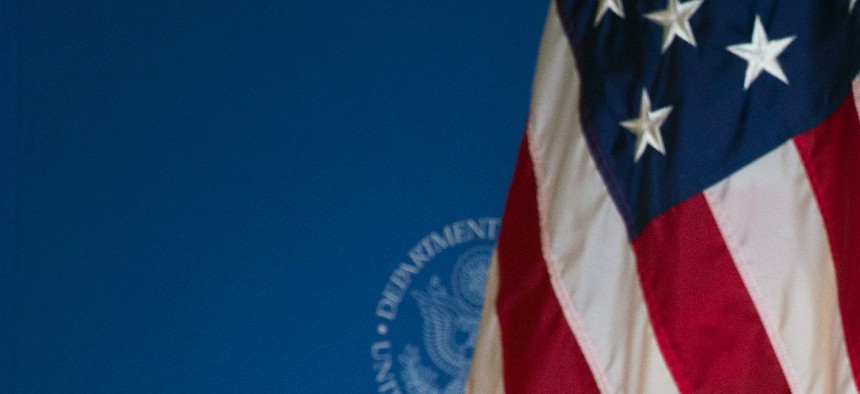
U.S. Secretary of State John Kerry announces a 72-hour humanitarian cease-fire beginning Friday between Israel and Hamas, in New Delhi, India, Aug. 1, 2014. The agreement broke down less than two hours after implementation. Lucas Jackson/AP
The Trouble With Cease-Fire Agreements in War
The Israeli-Gaza conflict is testing the limits of the concept of a ‘cease-fire’ as a departure from hostilities. If we can’t 'hear' the total silence from the guns of August, is there any way out of the cycle of violence? By Tara Sonenshine
Less than two hours after Israel and Hamas agreed to a 72-hour “cease-fire” in the Gaza conflict, violence erupted yet again, raising the question of what exactly a cease-fire means for today’s warring factions. According to statements by Secretary of State John Kerry and the Secretary-General of the United Nations, a cease-fire means a “reprieve from violence” during which time urgently needed humanitarian relief is provided, and vital functions like provision of water and medical care become available.
But what does a cease-fire really mean? And where does it lead?
What is never quite clear is the degree to which cease-fires are the beginning of the play or the closing act. The word “cease-fire” has not always been a hyphenated word or a noun. Historically, it was a military command leading to a diplomatic outcome. There are many examples in the history of military operations where orders came down to “cease” fire leading to a “ceasefire”—single word, noun. But the aftermath is rarely quick.
During WWI, there was an unofficial Christmas Day ceasefire announced by the powers of the Western Front in 1914. It didn’t last. Fighting continued until 1918 following an armistice between the Allies and Germany—at the 11th hour.
WWII had offers of cease-fires by the Germans but it took their unconditional surrender before D-Day came.
Towards the end of the Korean War there was a “cease-fire” that led to the establishment of a de-militarized zone—the now-famous DMZ.
In the case of Vietnam, there was a cease-fire in aerial bombing and some historians say the cease-fire was the prelude to the Paris Peace Accord.
For the Palestinians in the current Israeli-Gaza conflict, there are urgent humanitarian needs to be met. For the Israelis, there is still a threat of more rockets from Hamas that would violate the humanitarian cease-fire.
My guess was that a cease-fire could not hold because the sequencing is off. The Israelis want serious “tunnel diplomacy” in addition to permission to keep unearthing these Palestinian passages of death. Ultimately, the issue is should the people in Gaza have weapons—sort of a primitive version of gun control arguments. Are they for defense or for self-protection? De-militarization is a major sticking point in this conflict. As we learned with Korea, zones that prohibit weapons take years of policing, often by outside powers to enforce.
The other difficult issue is the Hamas charter that denies Israel the right to exist. That makes a durable cease-fire to set the table for peace rather complicated.
For foreign policy analysts, the next few days will be grist for the mill. Diplomats will have a field day arguing over whether the next cease-fire is a ceasefire or a “preliminary agreement, “-- a partial agreement,” an interim solution, an interlude before an “armistice,” or the prelude to a “truce” or even a treaty.
This conflict has raged for decades. It will not cease in 3 days. But even plays have intermissions, and let’s hope the next cease-fire has more lasting power than the last.
Tara Sonenshine is Distinguished Fellow at George Washington University’s School of Media and Public Affairs and former under secretary of state for public diplomacy and public affairs.
